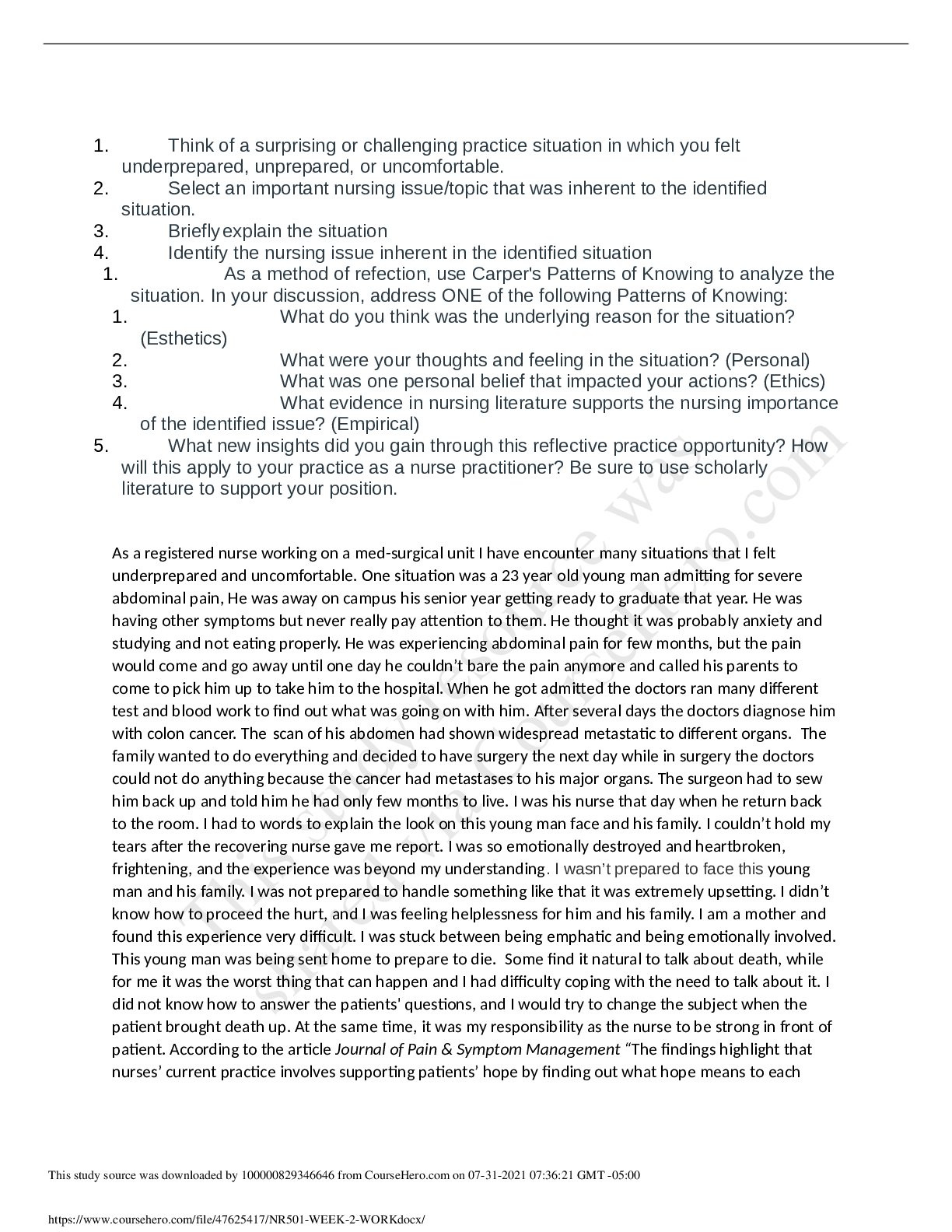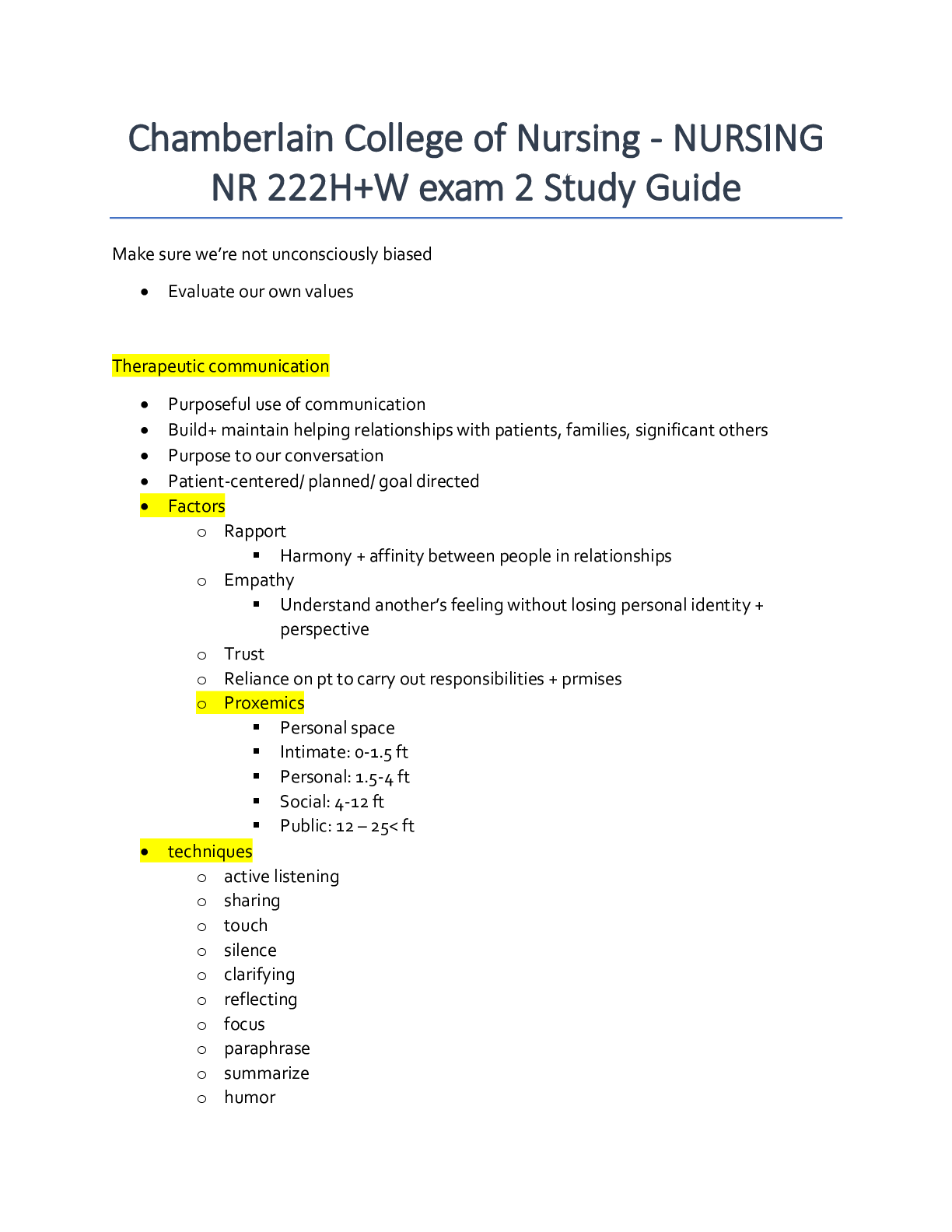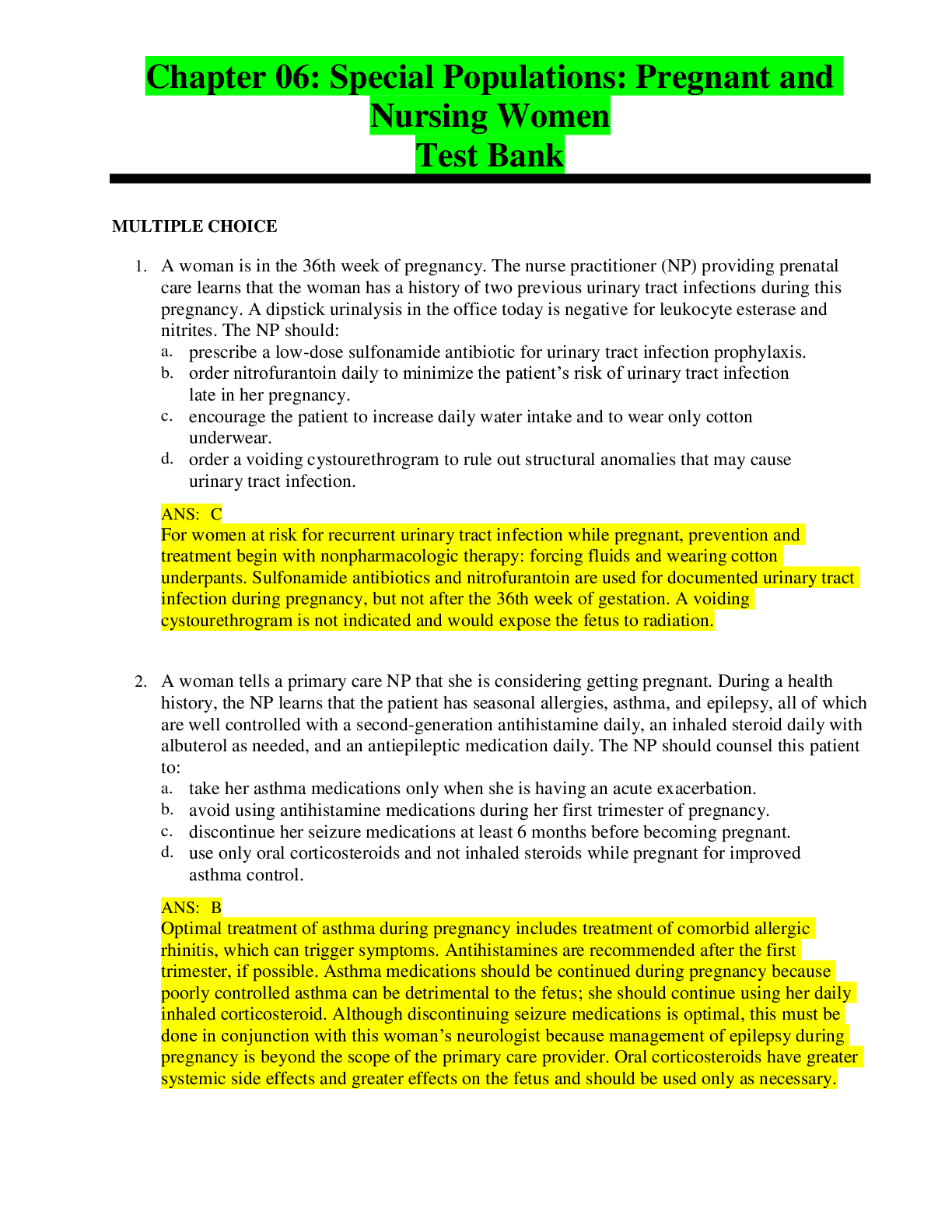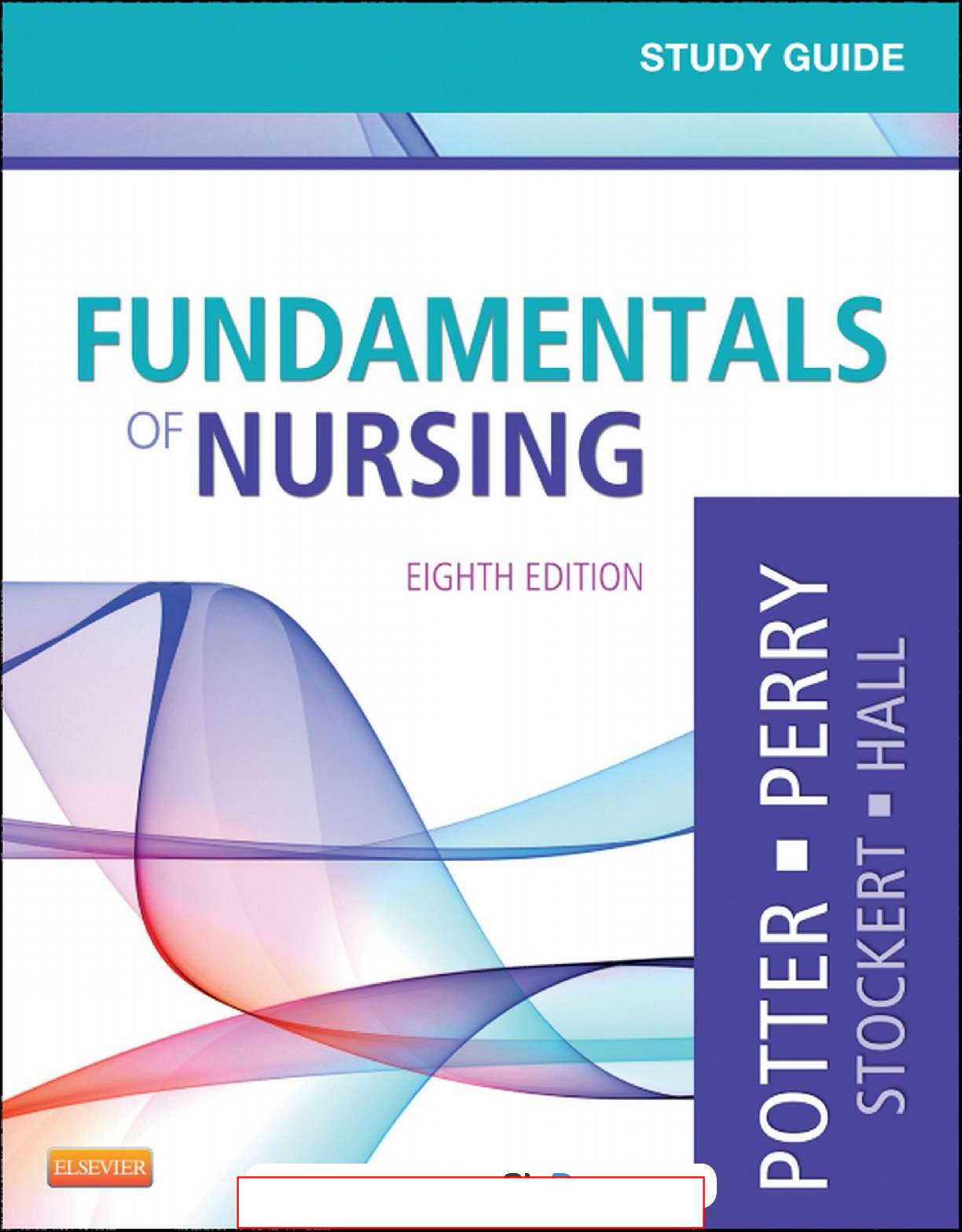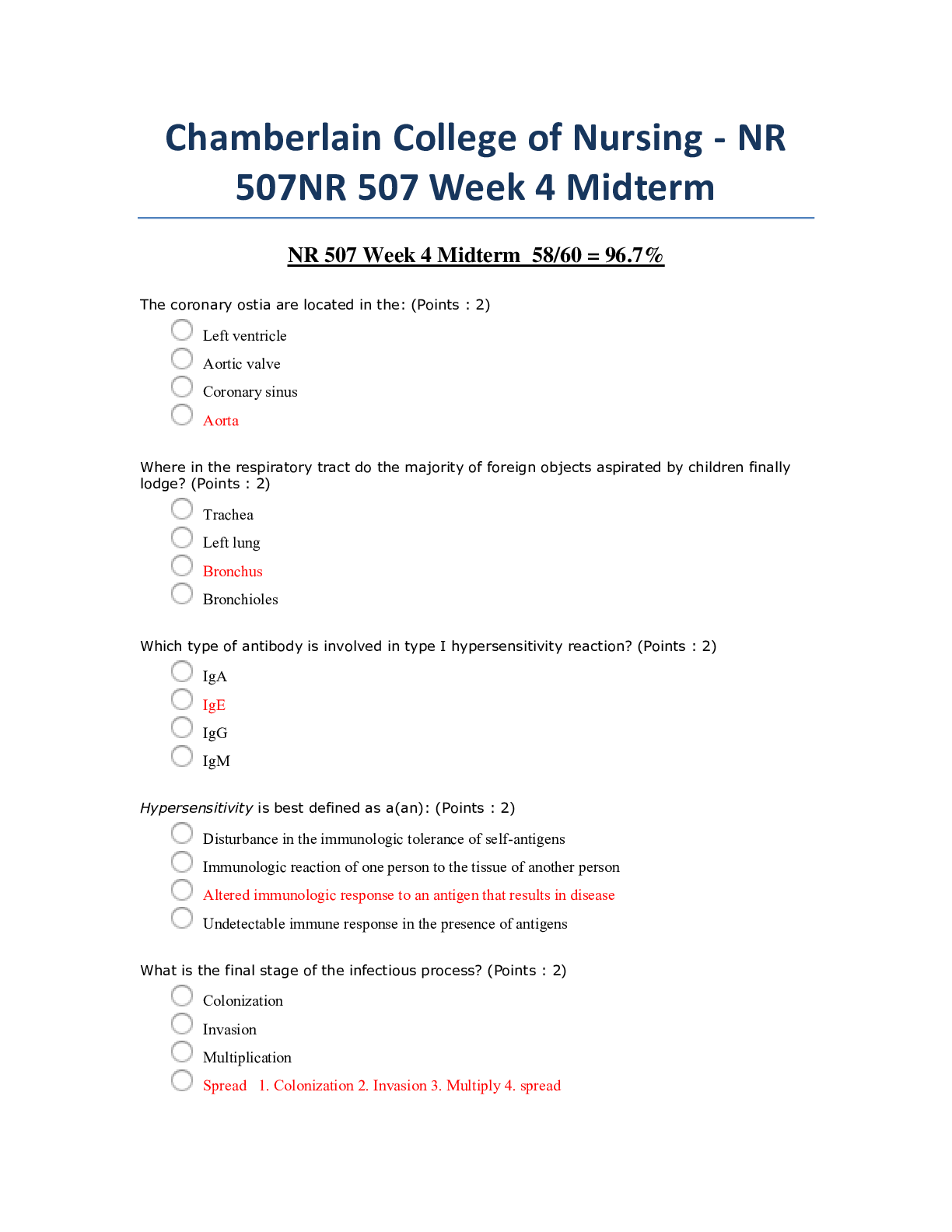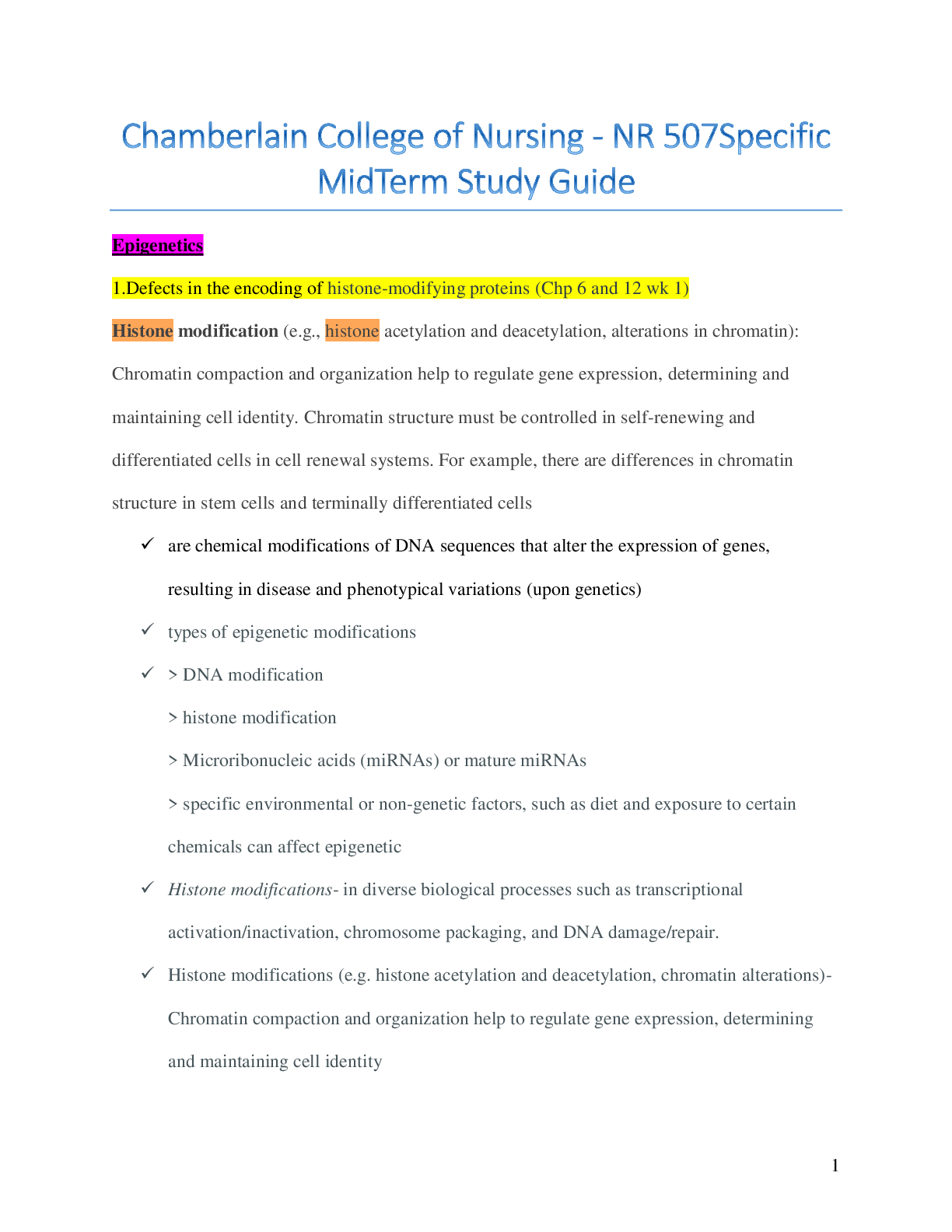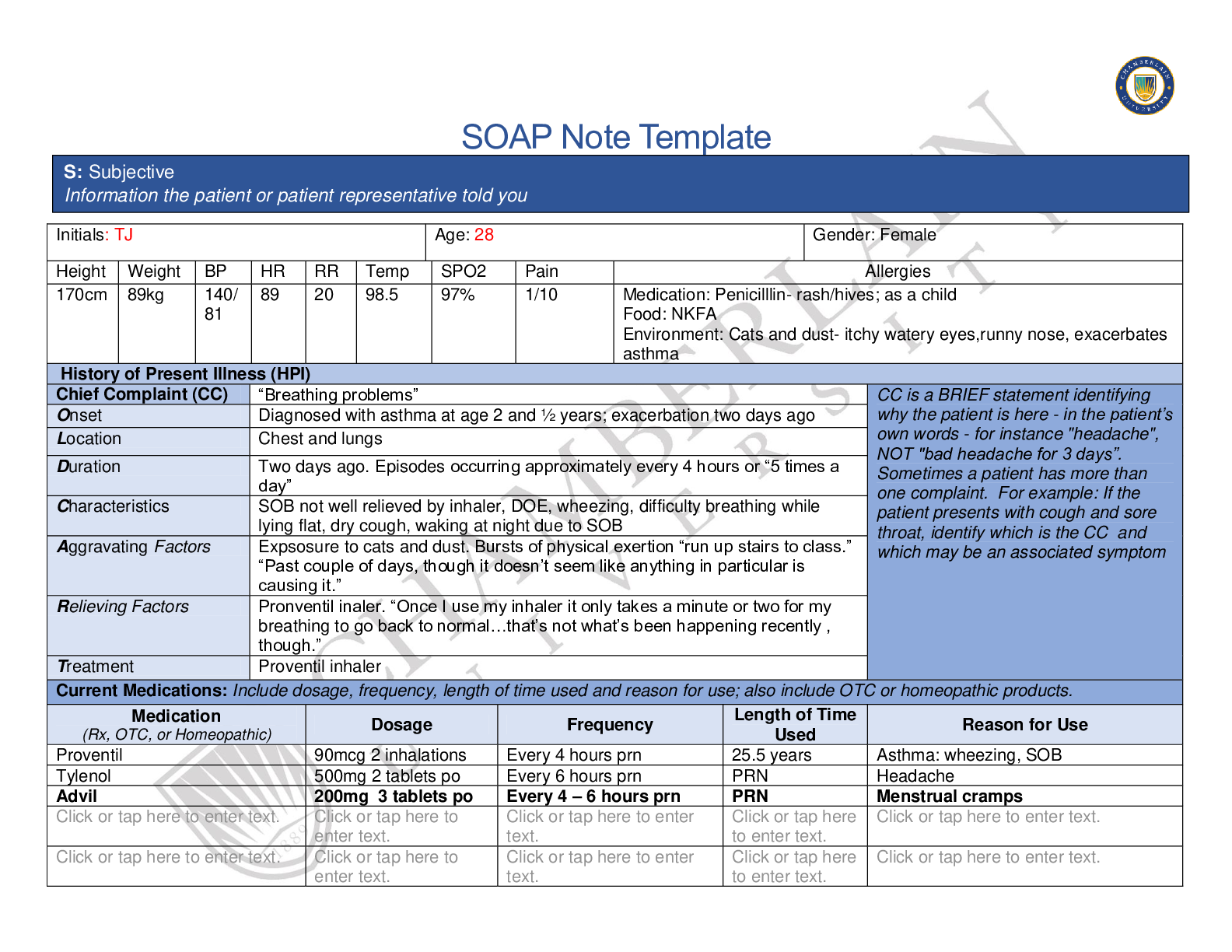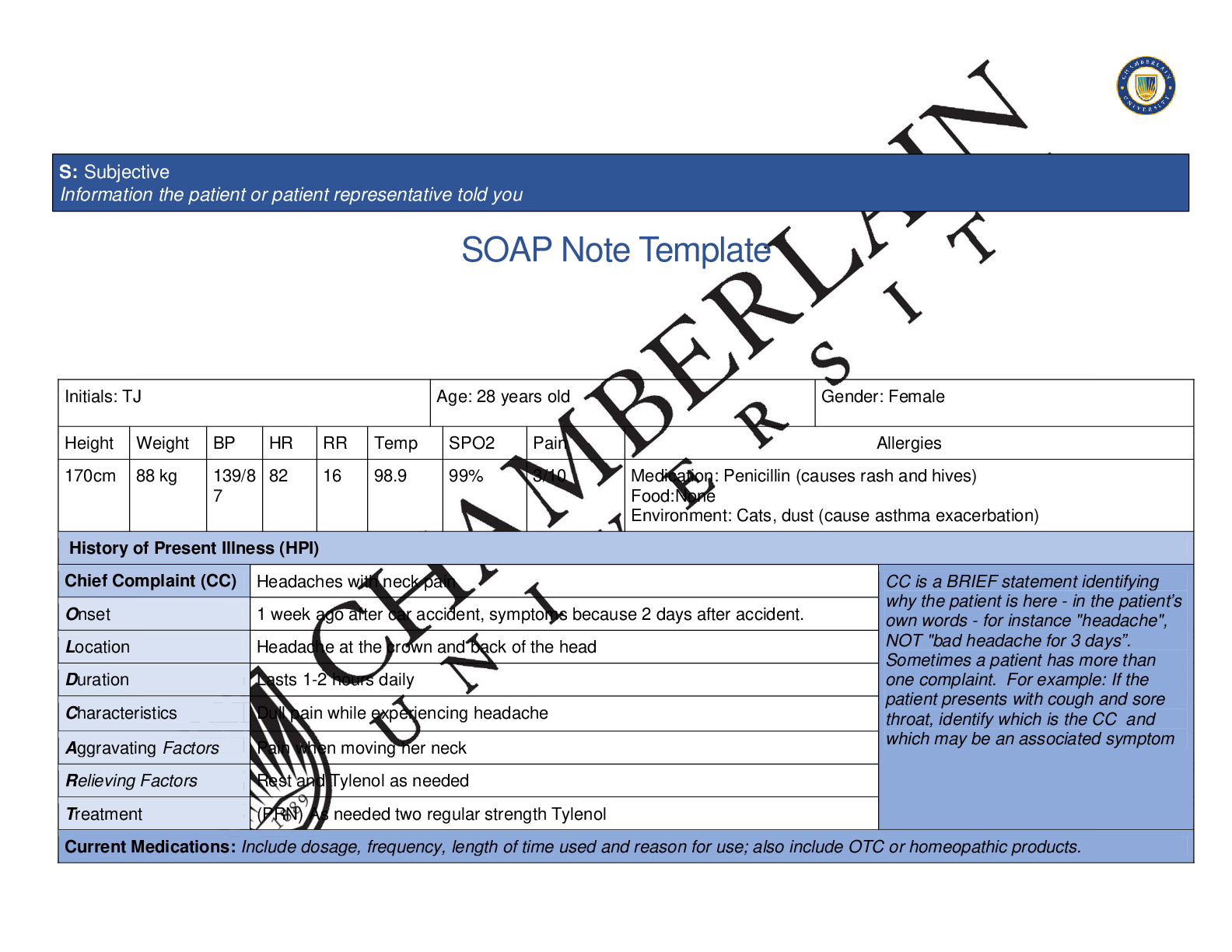*NURSING > QUESTIONS & ANSWERS > Chamberlain College of Nursing - MED SURGIC 324med surg 2 exam2017 (All)
Chamberlain College of Nursing - MED SURGIC 324med surg 2 exam2017
Document Content and Description Below
Nursing School Test Banks Skip to content • HOME (For Test Banks List) • REGISTER • PROFILE • CONTACT • LOG OUT • LOG IN • Nclex Questions • Request Test Bank • Privacy Pol... icy & Terms • REVIEWS Chapter 30: Nursing Assessment: Hematologic System Chapter 30: Nursing Assessment: Hematologic System Test Bank MULTIPLE CHOICE 1. The nurse is caring for a patient who is being discharged after an emergency splenectomy following an automobile accident. Which instructions should the nurse include in the discharge teaching? a. Watch for excess bruising. b.Check for swollen lymph nodes. c. Take iron supplements to prevent anemia. d. Wash hands and avoid persons who are ill. ANS: D Splenectomy increases the risk for infection, especially with gram-positive bacteria. The risks for lymphedema, bleeding, and anemia are not increased after a person has a splenectomy. https://dl-mail.ymail.com/ws/download/mailboxes/@.id==VjJ-Wx…dn97eDtvuLi2hyQ1lkCO4cRsyyLohGCDfT-2ZtlT9A_pt3lDMkvO-73 5/15/17, 1V34 PM Page 1 of 141 DIF: Cognitive Level: Apply (application) REF: 618 TOP: Nursing Process: Implementation MSC: NCLEX: Physiological Integrity 2. The nurse assesses a patient who has numerous petechiae on both arms. Which question should the nurse ask the patient? a. “Do you take salicylates?” b. “Are you taking any oral contraceptives?” c. “Have you been prescribed antiseizure drugs?” d. “How long have you taken antihypertensive drugs?” ANS: A Salicylates interfere with platelet function and can lead to petechiae and ecchymoses. Antiseizure drugs may cause anemia, but not clotting disorders or bleeding. Oral contraceptives increase a person’s clotting risk. Antihypertensives do not usually cause problems with decreased clotting. DIF: Cognitive Level: Understand (comprehension) REF: eTable 30-1 TOP: Nursing Process: Assessment MSC: NCLEX: Physiological Integrity 3. A nurse reviews the laboratory data for an older patient. The nurse would be most concerned about which finding? a. Hematocrit of 35% b. Hemoglobin of 11.8 g/dL c. Platelet count of 400,000/µL d. White blood cell (WBC) count of 2800/µL ANS: D Because the total WBC count is not usually affected by aging, the low WBC count in this patient would indicate that the patient’s immune function may be compromised and the underlying cause of the problem needs to be investigated. The platelet count is normal. The slight decrease in hemoglobin and hematocrit are not unusual for an older patient. DIF: Cognitive Level: Apply (application) REF: 619 TOP: Nursing Process: Assessment MSC: NCLEX: Physiological Integrity 4. A patient with pancytopenia has a bone marrow aspiration from the left posterior iliac crest. Which action would be important for the nurse to take after the procedure? a. Elevate the head of the bed to 45 degrees. b. Apply a sterile 2-inch gauze dressing to the site. c. Use a half-inch sterile gauze to pack the wound. d. Have the patient lie on the left side for 1 hour. [Show More]
Last updated: 2 years ago
Preview 1 out of 141 pages

Buy this document to get the full access instantly
Instant Download Access after purchase
Buy NowInstant download
We Accept:

Reviews( 0 )
$5.00
Can't find what you want? Try our AI powered Search
Document information
Connected school, study & course
About the document
Uploaded On
Mar 16, 2021
Number of pages
141
Written in
Additional information
This document has been written for:
Uploaded
Mar 16, 2021
Downloads
0
Views
81




.png)



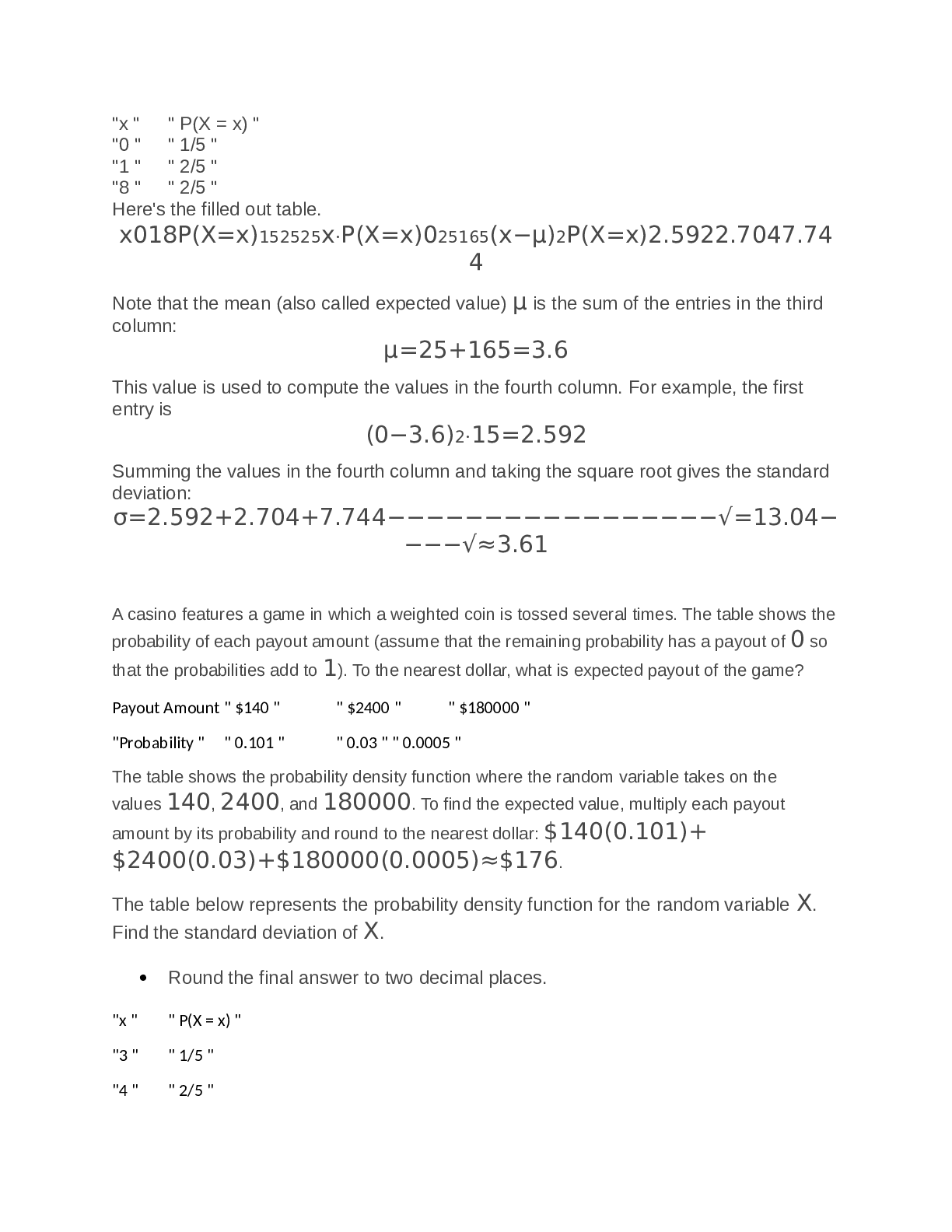
.png)

